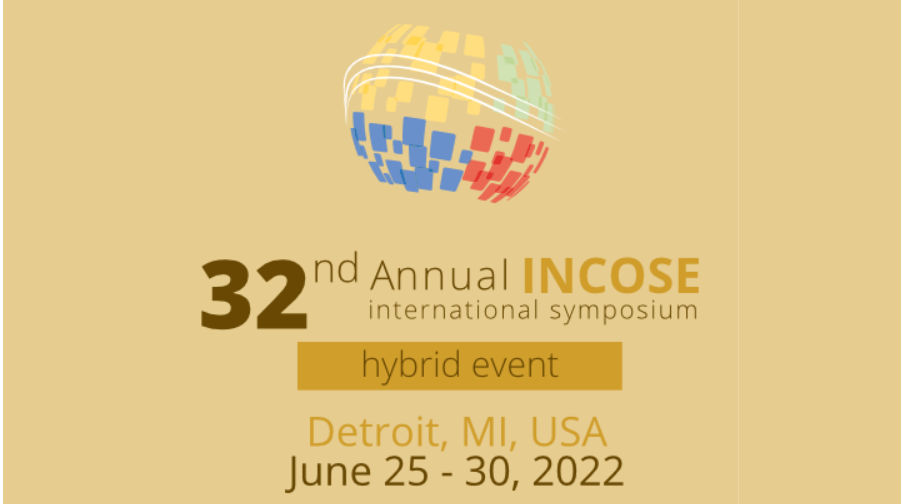INCOSE is the MBSE hub

The International Council on Systems Engineering’s (INCOSE) annual symposium is fast approaching. This year’s hybrid event will be hosted in Detroit from June 25th to the 30th. If you have never attended, it is a great opportunity to learn, teach, and collaborate on all things system development. Even if you cannot make it to the event in-person this year, there will still be plenty to learn about from experts in a variety of disciplines and industries. Siemens Software will have experts from the automotive, aerospace, and electronics industries to discuss the growing complexity of modern product development and how a digital approach with model-based systems engineering (MBSE) is turning the complexity into an advantage.
If you can attend a session from Nand Kochhar, Dale Tutt, or Dr. Ravi Subramanian, you’ll learn about the increasing reliance of smart devices in our everyday lives, from the perspectives of automobiles, aircraft, and electronics. For a full description of their presentations, you might want to check out the last blog on INCOSE. But all of these presenters share a view of future product development. Products are increasingly comprised of systems of systems, with contributions from a growing number of disciplines stretching around the globe. A modern MBSE approach like that available from Siemens uses rigorous methods to define, plan, validate, and iterate on creating the best product possible.
Defining the problem
Systems engineering has always been about defining the problem space of a product – what customer needs are there? Are there manufacturing limitations? What regulations must be followed to receive certification? Depending on the industry, each of these receives more or less weight in initial decisions, but it is critical for developers to understand the needs going into design of a product. For aerospace and transportation, many of the newest requirements to products involve the adoption of autonomy and electrification. Both provide different sets of system requirements, but both must be defined well to create the right product. The path of advancement in these two industries highlights the growing importance of the electronics industry, especially when aircraft and automobiles have historically been mechanical-first products. Connections to electronics must be defined from the beginning and communicated readily across the entire lifecycle.
Effective collaboration
The second pillar of a successful complex product is effective communication and collaboration during development. When hundreds, and even thousands, of teams are working on an individual project it is important to communicate changes accurately, reliably, and promptly to the entire organization. This need is why the digital twin is so great, as an actionable repository of learnings – whether from simulation, real-world data, or some combination thereof. MBSE acts as the threads connecting activities back to the digital twin and the definitions made early on provide the guidance for decisions. Constant communication extends beyond internal engineering teams, to every department in a business and even their entire supply chain to ensure interoperability and traceability of innovation.
Validating every decision
To make sure the right product comes out at the end, validation is key. Not just at the end, not at multiple steps in the lifecycle, but across all of development and even the lifetime of the product. The products of these three industries are critical to many businesses and even the lives of many people, and that is only growing with the adoption of autonomy. This increased risk to the manufacturer makes validation even more important than before, if that’s possible. Risk emerges from direct safety of users, but also in secondary effects of pollution and carbon emissions. Validation provides the data on decision impact, to then be analyzed within the digital twin of the product and production. The electronics being used in automobiles and aircraft needs to last much longer than those in cellphones and other consumer electronics, requiring better testing and analysis in the digital world and validation of the models from the real-world.
All of these changes to complex development are under the umbrella of model-based systems engineering, and it is important to understand them in the general sense to know how they fit into your business. But the implementation can change dramatically on where it is deployed. For better refinement on what MBSE means for your business the presentations from Siemens experts at INCOSE is a great path, but if you can’t make it you may also want to check out the MBSE topic page from Siemens Digital Industries Software to learn more. We hope to see you soon, whether it is in Detroit or online.
Siemens Digital Industries Software is driving transformation to enable a digital enterprise where engineering, manufacturing and electronics design meet tomorrow. Xcelerator, the comprehensive and integrated portfolio of software and services from Siemens Digital Industries Software, helps companies of all sizes create and leverage a comprehensive digital twin that provides organizations with new insights, opportunities and levels of automation to drive innovation.
For more information on Siemens Digital Industries Software products and services, visit siemens.com/software or follow us on LinkedIn, Twitter, Facebook and Instagram.
Siemens Digital Industries Software – Where today meets tomorrow


